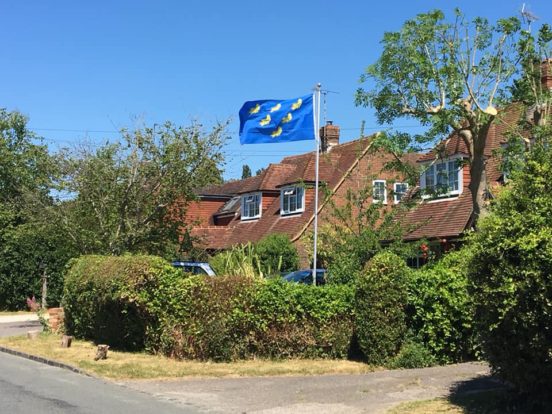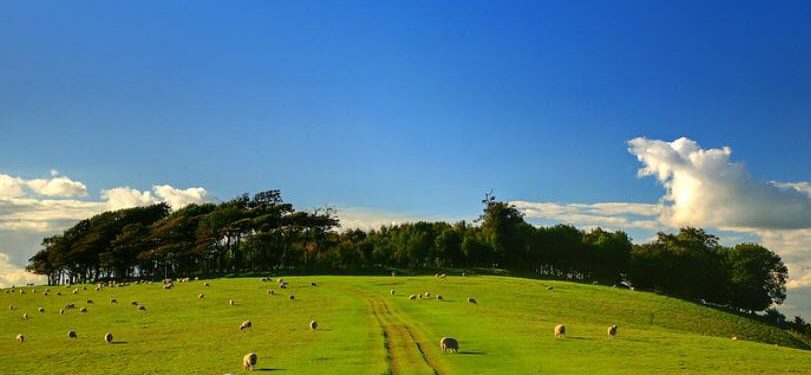Sussex Day is celebrated on 16th June, the feast day of St Richard of Chichester, the county’s patron saint. We present our Map of Sussex and our portrait of the county. We highly recommend the Sussex Flag Facebook page to all lovers of Sussex.
Sussex is a maritime county on the south coast of England. Sussex, once a Kingdom, has a history, an identity and a culture dating back 1,500 years.
Sussex’s coastline is more than 80 miles long, with sandy beaches almost unbroken along its whole length from Chichester Harbour to Camber Sands. Behind the coast rise the chalk uplands of the South Downs. The Downs run from eastern Hampshire eastward through Sussex, their scarp facing the English Channel and creating the narrow coastal strip. Three rivers break through the downs: the Arun, the Ouse and Cuckmere. The Downs meet the sea with Seven Sisters, the remnants of dry valleys cut into the chalk, ending spectacularly at Beachy Head.
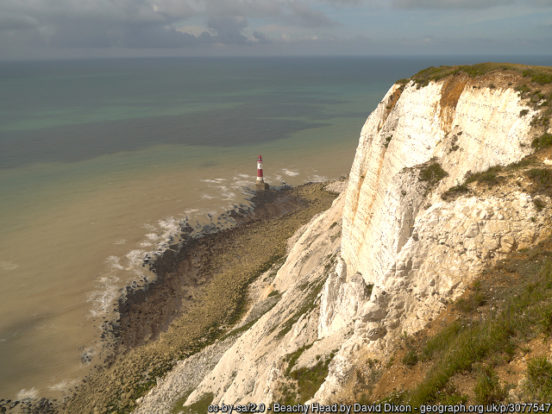
The hill country known as the Weald occupies Sussex’s northern borderlands, stretching from Hampshire to the Channel coast near Hastings. The county’s highest point is on the Weald, Black Down at 918 feet. The Weald is heavily wooded. Between the Downs and Weald is a narrow stretch of lower lying land.
East of Beachy Head lie the marshlands of the Pevensey Levels. At Bexhill the land begins to rise again where the sands and clays of the Weald meet the sea; these culminate in the sandstone cliffs east of Hastings. Further east, the Pett Levels are marshland to the River Rother estuary, beyond which stretch the dunes of Camber Sands.

The coastal strip of Sussex, squeezed between the South Downs and the English Channel, are what makes “Sussex by the Sea” so famous. Here are a long string of beach resorts. Bognor Regis became a tourist destination in the 19th-century, acquiring the “Regis” following King George V’s convalescence in the town in 1929. Butlin’s Bognor holiday camp opened in 1960 and is one of the few still open. Littlehampton stands at the mouth of the River Arun and is a thriving port for thousands of leisure craft. Worthing was a small mackerel fishing hamlet until in the late 18th-century it developed into the famed elegant Georgian seaside resort it remains today. The nearby area contains numerous Stone Age flint mines and the huge Iron Age hill fort of Cissbury Ring. Shoreham-by-Sea lies at the mouth of the River Adur. Shoreham Beach is a shingle bank thrown up over the centuries by the sea through the process of longshore drift. The town remains a commercial port.
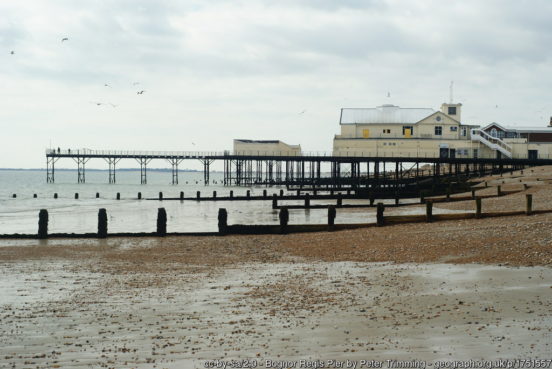
Hove grew as a seaside resort alongside its near neighbour Brighton. The Brunswick estate around the seafront in the east of Hove is made up of large Regency houses. Further west, the seafront forms the end of a series of avenues, composed of fine Victorian villas. Hove’s wide boulevards are in contrast to the bustle of Brighton. Brighton is a most remarkable town. Its beachfront is the quintessential seaside resort. In its heart is the higgledy-piggledy maze of The Lanes, and behind it the rampant indo-chinoiserie of King George IV’s seaside palace, the Brighton Pavilion.

Past Beachy Head lies Eastbourne, until the 19th century just a collection of hamlets. Assisted by the arrival of the railway in 1849, Eastbourne grew to become a prime Victorian seaside resort and still is today. Pevensey Castle is a mediæval castle built upon and within the walls of a Roman Saxon Shore fort at Pevensey, north -east of the town.
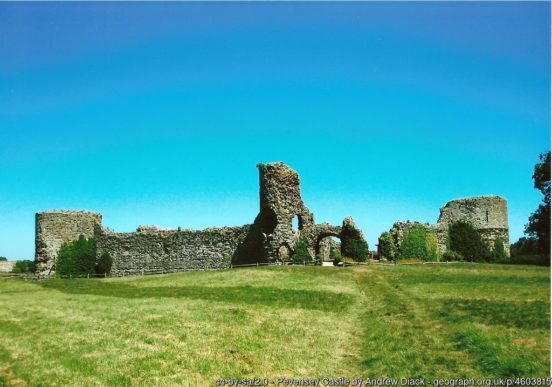
Bexhill-on-Sea contains an abundance of Edwardian and Victorian architecture, and the famous De La Warr Pavilion. St Leonards-on-Sea was originally laid out in the early 19th-century as an affluent new town. On the sea front stands an ocean liner shaped art-deco building known as Marine Court, which upon completion in 1937 was the tallest block of flats in the United Kingdom. Hastings is a well-to-do seaside town and resort. Looming over it on are the remains of the castle William the Bastard built on landing on his way to become the Conqueror at Senlac Hill, six miles to the north-west.

Above the seaside towns the Downs rise sharply, and here Sussex shows some of its greatest glories. The chalk can make a great rolling wave, falling into the sea in spectacular white cliffs as at the Seven Sisters and Beachy Head. The open grassland is fine sheep country, or elsewhere the clay feeds rich broadleaved forest.
Chichester, the capital city of Sussex, lies at the western end of the county. Chichester is a modest cathedral city, sitting on a Roman foundation (the Roman wall is still visible in places) and centred on a mediæval market cross. Chichester Harbour (a top yachting haven) is a large natural harbour, by far the biggest in Sussex and a contrast to the smooth stretch of the rest of the county’s coast.
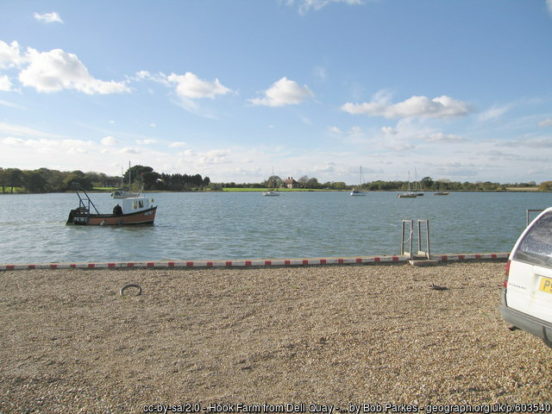
Away from the coast, the west of the county has several small towns. Arundel is a small market town nestling in the South Downs next to the Arun. Arundel Castle was built by the Normans to protect that vulnerable point to the north of the valley through the South Downs. Midhurst, a market town on the River Rover, has Cowdray House, a ruined Tudor mansion. The small town of Petworth has the late 17th-century mansion Petworth House (NT). Steyning is a small town located at the north end of the River Adur gap in the South Downs.
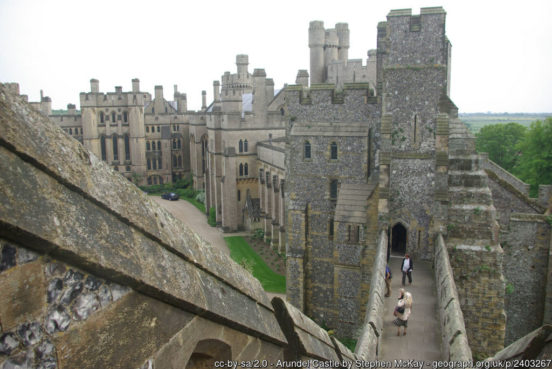
The inland towns in the central part of the county include Horsham, a market town on the upper reaches of the River Arun on the fringe of the Weald. East Grinstead, close to the Surrey border, has a High Street which contains one of the longest continuous runs of 14th-century timber-framed buildings in England. Crawley is an industrial town, designated a New Town in in 1947, though one built on earlier roots. The major influence on Crawley and its business community is Gatwick Airport just across the border in Surrey. Burgess Hill, in the centre of the county, is home to offices of many national and international companies. Haywards Heath, nearby, is primarily a commuter town.

The towns in the eastern part of the county include Crowborough, lying high on the Weald at the edge of Ashdown Forest, an ancient area of tranquil open heathland. The highest point in the town is 794 feet, one of the highest spots in the county. Uckfield, on the southern edge of the Weald, contains a number of post-mediæval buildings, including the Old Grammar School and Bakers Cottage. Heathfield lay on an ancient trackway connecting the South Downs with the Weald. The nearby mansion of Heathfield Park dates from the 17th-century.
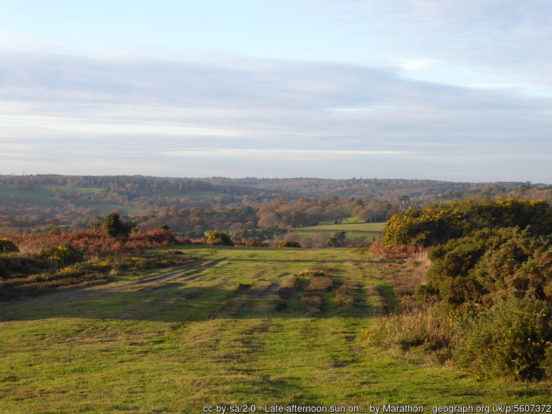
Lewes, the county town, sits on the Greenwich Meridian, in a gap in the South Downs, cut through by the River Ouse. In 1264 it was the site of the Battle of Lewes. The town’s many landmarks include Lewes Castle, Lewes Priory, Bull House (the former home of Thomas Paine), Southover Grange and public gardens, and a 16th-century timber-framed Wealden hall house known as Anne of Cleves House.

Hailsham has a long history of agriculture and industry and is surrounded by unspoilt scenery. To the east of Hailsham is Herstmonceux Castle, a brick-built Tudor castle previously a home to the Royal Greenwich Observatory. South-west of Hailsham, on Windover Hill near Wilmington, is the famous Long Man of Wilmington hill figure.
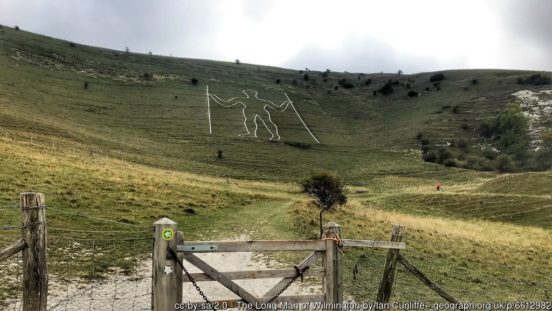
Battle, the site of the Battle of Hasting, is situated in the heart of the Sussex Weald. Battle Abbey was founded to commemorate the battle, and dedicated in 1095. The high altar of the Abbey church was reputedly on the spot where Harold died. Near the village of Robertsbridge, north of Battle, is Bodiam Castle (NT), a fairytale moated castle built in 1385 by Sir Edward Dalyngrigge, a former knight of King Edward III. In the village of Burwash is Bateman’s (NH), a 17th-century house and home to Rupyard Kipling from 1902 until his death in 1936.
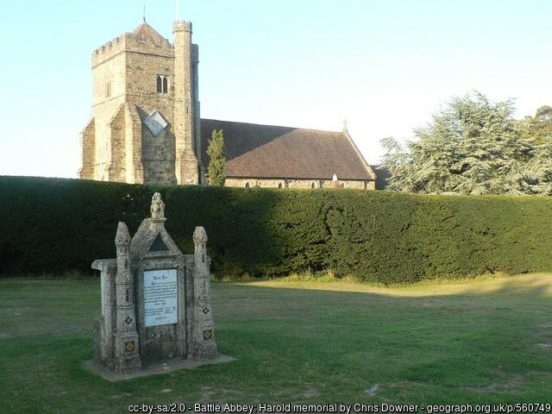
Rye, in the far east of the county, was in mediæval times an important member of the Cinque Ports confederation. The sea now lies two miles away but the town’s historic roots and charm make it a tourist destination.
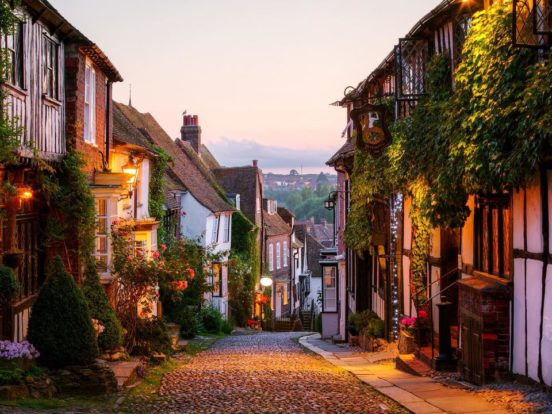
There are many Bronze Age monuments in the county. Round burial mounds known as bell barrows are found at various sites near Treyford and Worthing. There are Iron Age hill forts at the Trundle, at Cissbury, and at the Caburn Mount. A prehistoric iron industry developed from the availability of timber supplies and iron-ore deposits.

Sussex was the ancient kingdom of the South Saxons, from whom its takes its name (in Old English Suþseaxe means simply South Saxons). The South Saxons established themselves in the fifth century AD and built one of the earliest of the Kingdoms of the English. The Kingdom of Sussex was subsequently conquered by the neighbouring kingdom of Wessex, though the identity of Sussex continues unbroken since the 5th century. Sussex is famous as the site of the Battle of Hastings. Following the conquest, the Normans built numerous abbeys and castles. The chief mediæval towns were Chichester, Lewes, and the ports of Hastings and Rye. The Middle Ages saw the development of an iron industry in the Weald, based on local ore and charcoal.
Sussex has a strong local identity. The county’s unofficial anthem is “Sussex by the Sea” by William Ward-Higgs, inspired by a poem by Rudyard Kipling. The county’s motto, “We wunt be druv”, reflects the strong-willed nature of its people. The Sussex Flag is based on the traditional emblem of Sussex, six Gold martlets on a Blue field. This emblem was first used by John Speed in 1610, as the emblem of the Kingdom of the South Saxons. Today it is used by many Sussex organisations. Sussex Day is celebrated on 16th June each year. The event takes place on St Richard’s Day, the feast day of St Richard of Chichester, Sussex’s patron saint.
